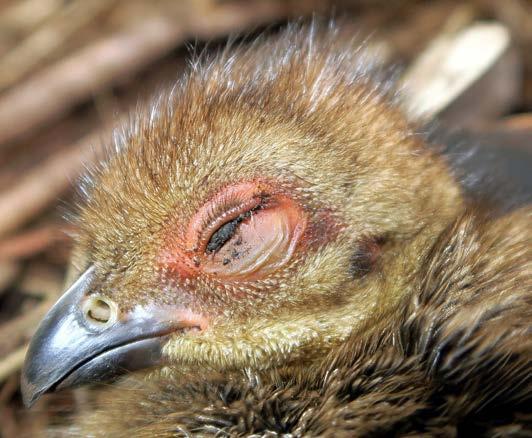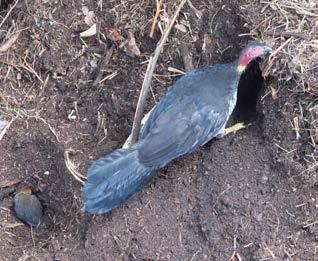
2 minute read
A tribute to survival
WORDS: MIKI OKA
I am sure we are all sick of hearing about the backyard bandit also known as the Australian brush turkey but I thought I'd offer a different perspective. Don't get me wrong, I am no fan of the destructive bird. Anyone who has a property between Brisbane and Wollongong knows what it is like to have their gardens torn up, holes dug in their lawns and other native species scared away by the big, black bully.
Even the most conscientious resident who makes sure they don't build mounds by raking up leaf litter, prunes tree branches to limit shady areas and protects their soft landscaping with hard covers like rocks and pebbles will find themselves victim to foraging brush turkeys that decimate gardens, raid compost bins and steal pet food. They certainly earn their bad reputation with their actions, almost as vilified as the sulphur-crested cockatoo and in some cases more so due to their persistence.
Unfortunately, there is not much that can be done about them as they are a protected species and any action taken against either them, their chicks or mounds carry an $11,000 fine or sixmonth prison sentence.
In the 1930's during the Great Depression when jobs and food were hard to come by people used the birds for meat and eggs, almost causing them to become extinct. These days they are not endangered as the brush turkey population has made a comeback, but the protection order still exists.
This is where my different perspective comes in.
There are a multitude of factors mean that every brush turkey that survives to adulthood is a miracle.

Between August and March, the male brush turkey works tirelessly to make a mound out of leaf litter and other compostable materials that is about 1.5m high and 4m across and the decomposing material heats the leaf litter to 33-35 degrees.

He subsequently calls for females to come mate with him and lay their eggs in his mound.
Using a sensor in his beak he maintains the temperature of the mound by either adding more material to heat the mound up or removing it to cool it down. He maintains and protects his mound for 50 days.
A small difference in temperature, either too cool or too hot, is all it takes to mean that the eggs don't hatch. Often when he is off searching for food predators like snakes and large lizards will come and eat the eggs. After the chicks hatch, they not only have to break out of their shells but they also have to dig their way to the surface of the mound which takes two days. After all that effort they are given no time to rest because despite having spent an inordinate amount of time on nest building, protection and maintenance the father brush turkey does not recognise his own chicks and immediately scares them away from the mound.
The new chicks are then left to fend for themselves with no training against all the other predators. Despite being able to fly mere hours after they clear the mound it is estimated that only one chick in every 200 eggs laid survives.
It is no wonder it has taken 90 years for them to return from the brink of extinction.
You have to admire a species that came that close to ceasing to exist and managed to recover through sheer force of will.
So next time we're all grumbling about our neighbourhood pests maybe we should remember a couple of things: they were here first and they are just doing everything they can to survive. The NSW Dept. of Planning & Environment website has advice on how to live with brush turkeys and minimise the damage caused by them. Miki took the photos while bush walking in Batten Reserve in Lane Cove
9160 9212


3/35 Alexandra Street
Hunters Hill NSW 2110
SMS US ON: 0478 916 069
BOOK ONLINE: www.maisondental.com.au www.maisondental.com.au









